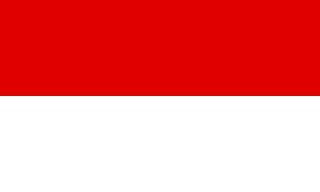
Hesse or Hessia, officially the State of Hesse, is a state in Germany. Its capital city is Wiesbaden, and the largest urban area is Frankfurt, which is also the country's principal financial centre. Two other major historic cities are Darmstadt and Kassel. With an area of 21,114.73 square kilometers and a population of over six million, it ranks seventh and fifth, respectively, among the sixteen German states. Frankfurt Rhine-Main, Germany's second-largest metropolitan area, is mainly located in Hesse.

Marburg is a university town in the German federal state (Bundesland) of Hesse, capital of the Marburg-Biedenkopf district (Landkreis). The town area spreads along the valley of the river Lahn and has a population of approximately 76,000.
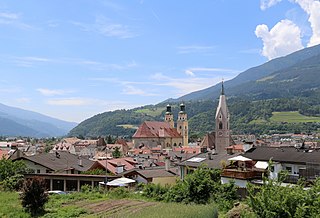
Brixen is a town and commune in South Tyrol, northern Italy, located about 40 kilometres (25 mi) north of Bolzano.

Brick Gothic is a specific style of Gothic architecture common in Northeast and Central Europe especially in the regions in and around the Baltic Sea, which do not have resources of standing rock. The buildings are essentially built using bricks. Buildings classified as Brick Gothic are found in Belgium, Netherlands, Germany, Poland, Lithuania, Latvia, Estonia, Kaliningrad, Denmark, Sweden and Finland.

Montabaur station is a station at the 89.1 kilometre point of the Cologne-Frankfurt high-speed railway and on the Limburg–Siershahn railway in the German state of Rhineland-Palatinate. The station, which is served by regional and long-distance passenger services and freight traffic, is on the outskirts of the town of Montabaur. It is aligned parallel with Autobahn 3 (A3), which runs immediately to the north.
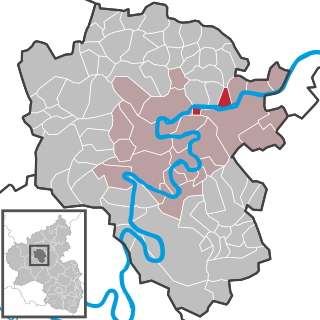
Pommern is an Ortsgemeinde – a municipality belonging to a Verbandsgemeinde, a kind of collective municipality – in the Cochem-Zell district in Rhineland-Palatinate, Germany. It belongs to the Verbandsgemeinde of Cochem.
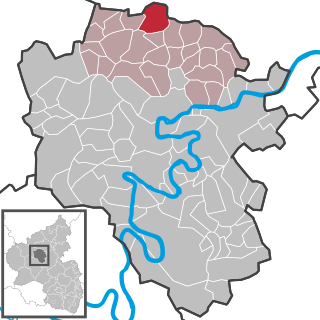
Düngenheim is an Ortsgemeinde – a municipality belonging to a Verbandsgemeinde, a kind of collective municipality – in the Cochem-Zell district in Rhineland-Palatinate, Germany. It belongs to the Verbandsgemeinde of Kaisersesch, whose seat is in the like-named town.
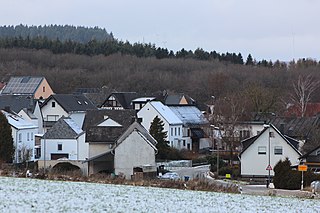
Eulgem is an Ortsgemeinde – a municipality belonging to a Verbandsgemeinde, a kind of collective municipality – in the Cochem-Zell district in Rhineland-Palatinate, Germany. It belongs to the Verbandsgemeinde of Kaisersesch, whose seat is in the like-named town.
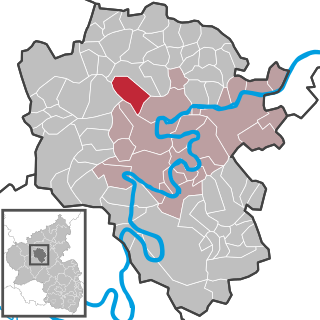
Greimersburg is an Ortsgemeinde – a municipality belonging to a Verbandsgemeinde, a kind of collective municipality – in the Cochem-Zell district in Rhineland-Palatinate, Germany. It belongs to the Verbandsgemeinde of Cochem, whose seat is in the like-named town.
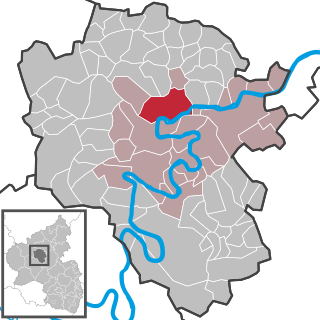
Klotten is an Ortsgemeinde – a municipality belonging to a Verbandsgemeinde, a kind of collective municipality – in the Cochem-Zell district in Rhineland-Palatinate, Germany. It belongs to the Verbandsgemeinde of Cochem, whose seat is in the like-named town. It is a winemaking centre.

Welgesheim is an Ortsgemeinde – a municipality belonging to a Verbandsgemeinde, a kind of collective municipality – in the Mainz-Bingen district in Rhineland-Palatinate, Germany.

Buch is an Ortsgemeinde – a municipality belonging to a Verbandsgemeinde, a kind of collective municipality – in the Rhein-Hunsrück-Kreis (district) in Rhineland-Palatinate, Germany. It belongs to the Verbandsgemeinde of Kastellaun, whose seat is in the like-named town.

Mastershausen is an Ortsgemeinde – a municipality belonging to a Verbandsgemeinde, a kind of collective municipality – in the Rhein-Hunsrück-Kreis (district) in Rhineland-Palatinate, Germany. It belongs to the Verbandsgemeinde of Kastellaun, whose seat is in the like-named town.
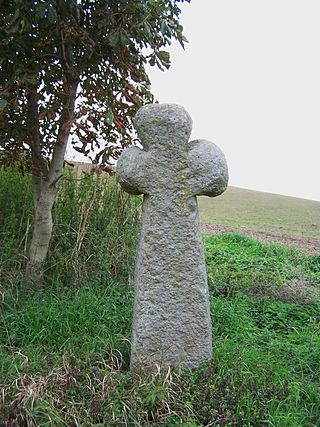
Conciliation cross, also known as roadside cross or penitence cross, is a stone cross, which was set up in a place where a murder or accident had happened. It occurs mainly in Central Europe.

A summit cross is a Christian cross on the summit of a mountain or hill that marks the top. Often there will be a summit register (Gipfelbuch) at the cross, either in a container or other weatherproof case.
The Hessian War, in its wider sense sometimes also called the Hessian Wars (Hessenkriege), was a drawn out conflict that took place between 1567 and 1648, sometimes pursued through diplomatic means, sometimes by military force, between branches of the princely House of Hesse, particularly between the Landgraviate of Hesse-Cassel and the Landgraviate of Hesse-Darmstadt. It was triggered by a division of inheritance following the death of the last landgrave of all Hesse, Philip I in 1567.

The basalt cross is a particular type of stone cross found in the Eifel mountains of Germany, bearing witness to the piety of the local population in times past. These crosses indicate their beliefs as well as the wealth and standing of the people who erected them. Details such as accidents, occupations and prayer requests have survived, thanks to the extremely weather-resistant material of which the crosses are made. Their geographic distribution is centred on the basalt quarries of Mayen and Mendig, and covers an area with a radius of approximately 30 kilometres between the Rhine, Ahr and Moselle rivers. The exact number of monuments is not known. Local historian, Kurt Müller-Veltin, estimates that there are about 4,500 wayside crosses and about 6,000 grave crosses. The conservation of these monuments is undertaken by the Rhenisch Society for Monument Conservation.

Stone crosses in Central Europe are usually bulky Christian monuments, some 80–120 cm (31–47 in) high and 40–60 cm (16–24 in) wide, that were almost always hewn from a single block of stone, usually granite, sandstone, limestone or basalt. They are amongst the oldest open-air monuments. A larger variant of the stone cross, with elements of a wayside shrine is called a shaft cross (Schaftkreuz).

The Scharhörnbake was the most important daymark on the German North Sea coast for several centuries. First erected in 1661 by the City of Hamburg on the sandbank Scharhörn and south side of the Elbe estuary, it was rebuilt over centuries and taken down finally in 1979. Equipped with a room, it also functioned as a refuge beacon for shipwreck survivors from 1840 to 1965. The only remaining element today is the boulder stone foundation near Nigehörn.
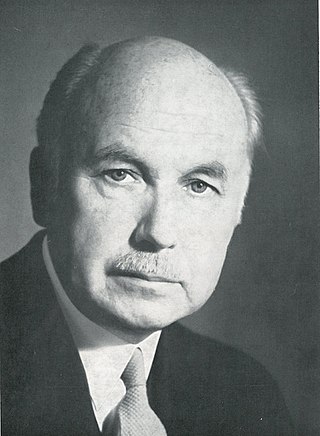
Paul Luchtenberg (1890–1973) was a German cultural scientist, educator and politician for the Free Democratic Party, as well as Culture Minister for North Rhine-Westphalia.




































